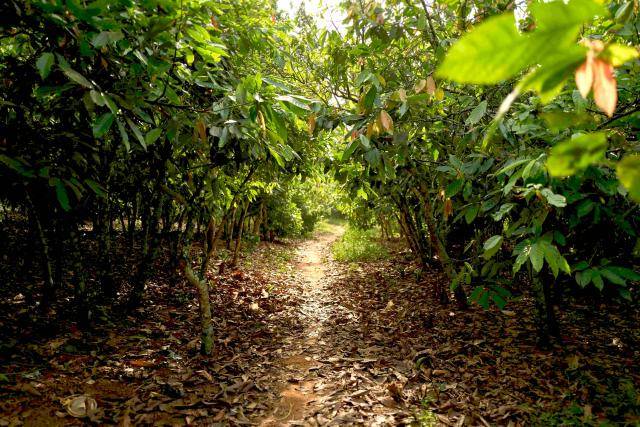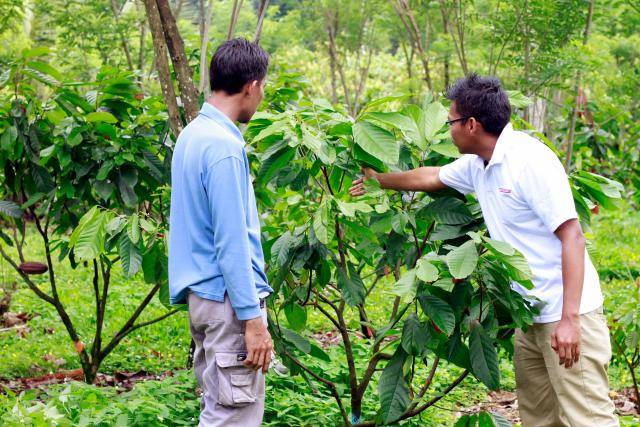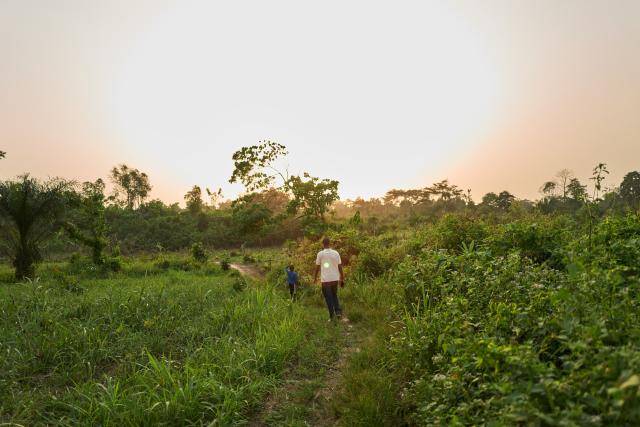Prospering Farmers
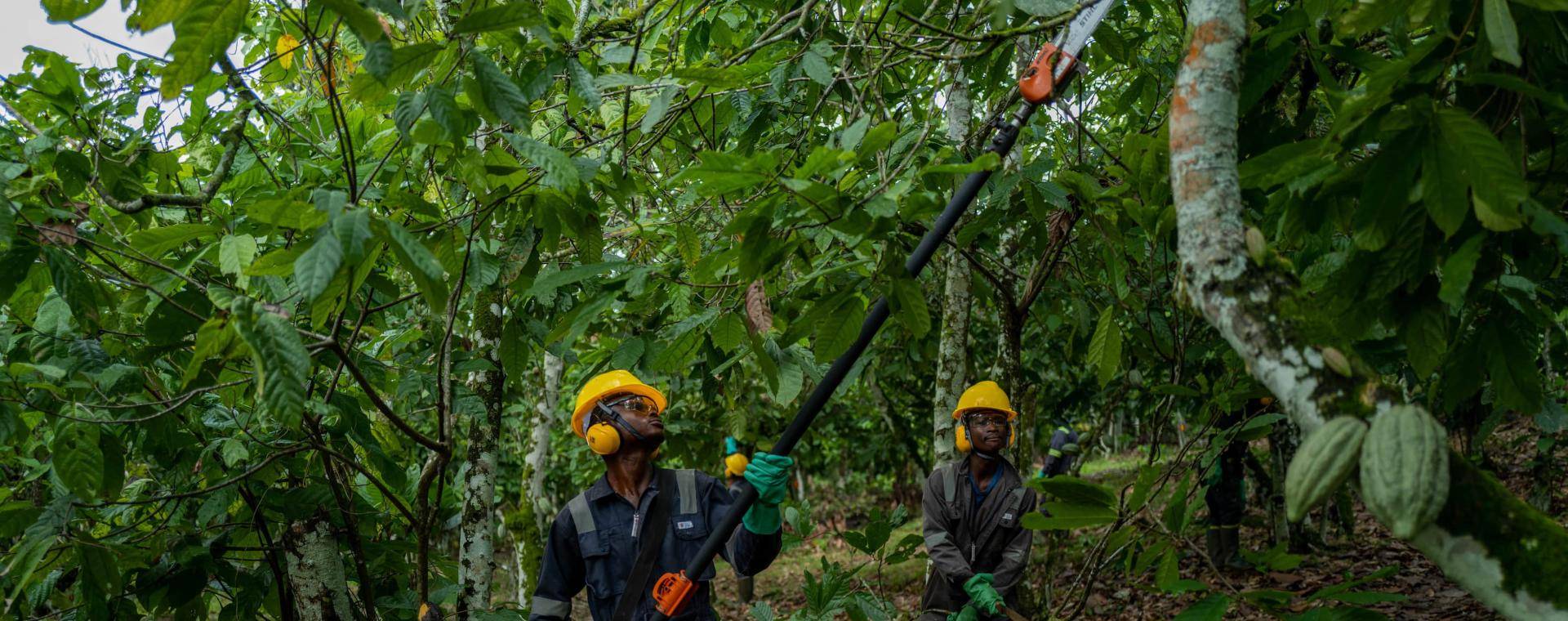
Prospering Farmers

Chocolate is product that brings joy to chocolate lovers. There are, however, structural issues in the chocolate value chain, a key issue being cocoa farmer poverty. At Barry Callebaut, we aim to transform the way cocoa is produced by enhancing the existing farming model in West Africa, and beyond.
Challenges faced by cocoa farmers
Most of the world's cocoa (almost two-thirds) comes from Côte d'Ivoire and Ghana, where it is cultivated by mostly independent smallholder farmers who supply various companies, and sometimes via several cooperatives. It is common for farmers to work on multiple fields, owning some of the plots while leasing others, often struggling with nutrient depleted soil, and aging cocoa trees. Cocoa farming is mainly done by manual labor carried out by farmers and their families.
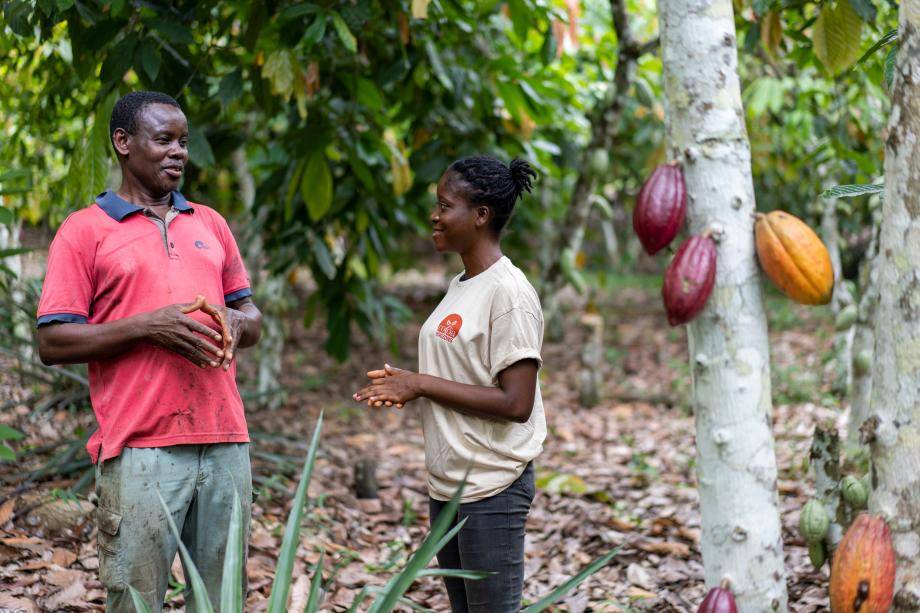
In Côte d’Ivoire, cocoa is predominantly grown by independent smallholder farmers.
Many cocoa farmers struggle to make a living income. Their main challenge is access to investments in their farms. Currently they spend most of their time doing post-harvest activities. Increasing cocoa yield however requires substantial investment in labor-intensive and time-consuming pre-harvest activities and costly farm inputs, such as soil fertilizer.
Our approach to support cocoa farmers
At Barry Callebaut, we aim to transform the way cocoa is produced by enhancing the existing farming model in Côte d'Ivoire, West Africa, and beyond. We firmly believe that focusing on increasing production volumes from a smaller group of farmers, who can then achieve a living income through a combination of better yield, larger farms, and higher farm gate prices, is the key. This is also confirmed by our extensive six-year study with IDH, Rainforest Alliance and Agri-Logic, summarized in our white paper published in May 2023.
Higher yield through supporting higher investment in farms
Through our 1,600 dedicated people working on the ground in cocoa-producing countries we aim to have an in-depth understanding of the conditions, challenges and potential of the farms and farmers we work with. To do so we capture their socioeconomic and household data through census interviews and map the geographical location and the size of their farms. As part of our Farm Services business, our Farm Services specialists then work with individual farmers to evaluate their farm landscape – soil analysis, age of cocoa trees, presence of alternative crops and livestock – and categorize the agricultural skills and resources the farmer already possesses. This results in the formulation of individualized Farm Business Plans (FBPs), including a multi-year model of the potential income a specific farm can generate if managed optimally.
Our support then focuses on the pre-harvest activities and investments needed to improve cocoa farmers' quality yield per hectare:
- Better soil management through subsidized fertilizer
Poor soil quality and the suboptimal use of agrochemicals is associated with declining cocoa yields. We provide farmers with productivity packages and focus on subsidizing fertilizers for farmers in Ghana and Côte d’Ivoire. - Financial support for third-party labor teams
By combining soil fertilizers with effective pruning, cocoa trees can maximize their fruit production, leading to improved quality and yield. The cost of additional labor for pruning is however often out of reach for farmers. Our labor teams program, launched in 2022, empowers farmers by assisting them with labor-intensive tasks such as pruning, weeding and correct pesticide application, and fertilizer usage. Local community members and cocoa farmers are contracted by cooperatives to form labor teams. Equipped with the necessary tools and equipment, these teams not only provide valuable support but also gain an additional source of income. - Providing improved planting material
The age and type of trees play a significant role in cocoa yield. Barry Callebaut aims to rejuvenate cocoa farms by distributing more resilient and higher-yielding seedling varieties. To create a thriving ecosystem for cocoa farms we also distribute non-cocoa trees, not only diversifying farmer incomes but also providing beneficial shade for cocoa seedlings, removing CO2 and enhancing soil quality and biodiversity on cocoa farms. All benefits of sustainable cocoa cultivation in an agroforestry system.
Farm size - the importance of larger farms
Larger farms can significantly enhance income by allowing for greater cocoa production, but only if coupled by adequate investment. Through cooperation with industry partners, donors and local implementers we support farmers in Côte d’Ivoire and Ghana in acquiring affordable and faster land documentation, thereby encouraging them to invest more in their land.
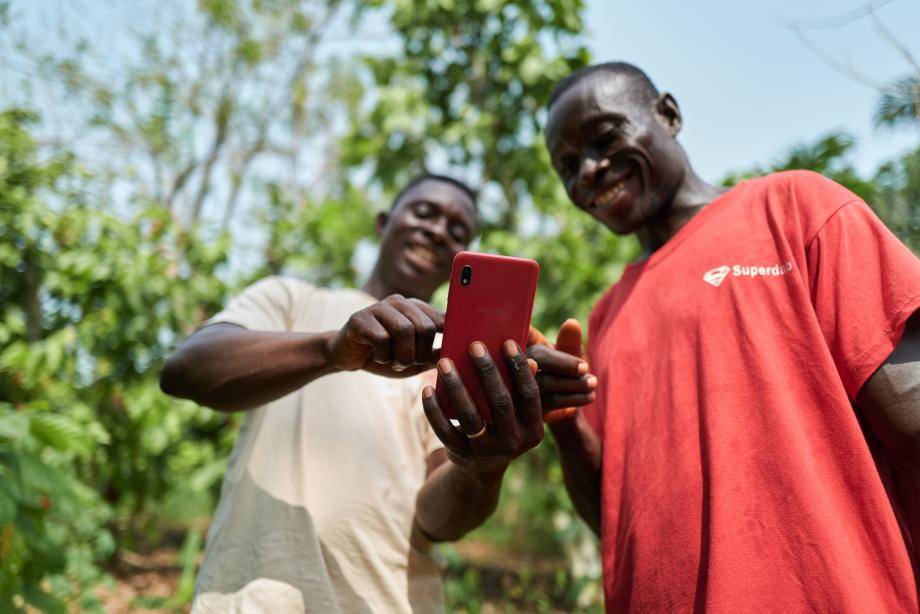
Digital payments are increasingly accepted in cocoa-growing origins. At Barry Callebaut, we scale our digital premium payment solutions across the world.
Higher price through premiums and shifting the discussion to farm gate price
Barry Callebaut collaborates with its customers on various premium-paying programs, facilitates digital premium payments and is a living income implementer, encouraging and supporting our customers to follow suit.
We also aim to shift the focus to the farm gate price as we recognize that higher farm gate prices contribute to poverty reduction. We believe that analyzing price construction mechanisms, including farm gate prices and export prices, will have the greatest positive impact on farmers' incomes.
Systemic change with all supply chain actors
Achieving a sustainable cocoa and chocolate sector requires commitment from all stakeholders in the supply chain. To enhance the implementation and impact of our Farm Services offerings, collaboration among sector-wide stakeholders and the public sector to drive structural change are imperative in driving poverty reduction. Government action at origin is essential to address the issues of traceability, rural infrastructure development and proper enforcement of national policies and legislation. These interventions must be coupled with regulatory intervention in cocoa-consuming regions to drive demand for sustainably sourced cocoa. This is why we are committing to mobilize key stakeholders around a transformative cocoa farming model that generates a living income.
Our progress and measured impact
The past year was marked by significant shifts in the cocoa sector. Climate stress and weather events led to global cocoa shortages and historic price spikes. In response, governments in Côte d’Ivoire and Ghana raised the farm-gate prices to CFA 2,200/kg and GHS 33,12/kg, respectively. While these increases contributed to improved farmer income, they alone are not sufficient to ensure long-term financial stability.
In 2024/25, we updated our poverty benchmark to reflect the World Bank’s June 2025 revision to USD 3.00 per person per day. This ensures our impact measurement remains transparent and aligned with global standards. The implications are visible in our reported results. The increase in terms of farmers reaching the poverty line is less steep - even though there was an increase in terms of cocoa prices in the past few cocoa seasons.
In 2024/25, we reached a major milestone in our journey toward enabling a living income for cocoa farmers. Despite climate-related challenges and a 30% increase in the poverty benchmark, we already achieved (and exceeded) our Forever Chocolate target for the 2025/26 reporting period. In 2024/25, a total of 557,739 cocoa farmers in our supply chain have risen above the poverty line - a 30.0% increase compared to 2023/24 figure of 428,997.
This achievement reflects the combined impact of rising farm-gate prices and the scale of our field-level interventions. However, we recognize that reaching the poverty line is only the beginning. Our vision is to build a transformative cocoa farming model that enables a living income in 2030.
As we move beyond the milestone of lifting 500,000 cocoa farmers out of poverty, our next challenge is clear: enabling farmers not just to survive, but to prosper - through resilient farming systems, diversified income streams and fair participation in the cocoa economy. Together with our partners, we will continue to invest in scalable solutions that drive lasting change across the sector.
